The Hidden Impact of Supplement Fillers on Gut Health: A Science-Based Guide
Introduction
When selecting a probiotic supplement, what's not in the bottle matters just as much as what is. While most consumers focus on probiotic strain counts and CFUs (colony-forming units), the hidden ingredients—fillers, flow agents, and anti-caking additives—can significantly impact how well your supplement actually works. This comprehensive guide examines the science behind common supplement fillers like silica (silicon dioxide) and magnesium stearate, their potential effects on gut health, and why choosing filler-free formulations may optimize your microbiome support.
Key Takeaways
- ✓ Fillers can interfere with supplement effectiveness: Magnesium stearate and silica may impact dissolution rates, nutrient absorption, and gut microbiome health
- ✓ Nanoparticle silica poses specific concerns: Research shows size-dependent effects on immune function and intestinal inflammation, with smaller particles linked to more severe impacts
- ✓ Gut microbiota disruption documented: Studies demonstrate that common food additives including silica can alter beneficial bacteria populations and trigger inflammatory responses
- ✓ Neurobehavioral effects observed: Animal research links silica nanoparticles to disruption of the microbiota-gut-brain axis, affecting cognition and behavior
- ✓ Microbiome diversity is protective: A varied gut microbiome with multiple beneficial bacterial strains provides superior health outcomes and disease resistance
- ✓ Prebiotics enhance probiotic function: Beneficial bacteria require proper nutritional support to colonize and thrive in the intestinal environment
- ✓ Filler-free formulations maximize potential: Eliminating unnecessary additives removes potential barriers to absorption, colonization, and therapeutic benefit
- ✓ Individual sensitivity varies: Those with existing gut inflammation, autoimmune conditions, or digestive sensitivities may be more vulnerable to filler effects
Understanding Common Supplement Fillers
What Are Silica and Magnesium Stearate?
Silicon dioxide (silica) and magnesium stearate are among the most ubiquitous additives in supplement manufacturing. Silicon dioxide, also known as silica, is a natural compound composed of silicon and oxygen that serves as an anti-caking agent in powdered supplements[1]. Silica prevents ingredients from clumping together and helps maintain product consistency during manufacturing and storage.
Magnesium stearate, meanwhile, is a salt formed from magnesium and stearic acid—a saturated fatty acid found naturally in many foods. Manufacturers use magnesium stearate as a "flow agent" to prevent ingredients from sticking to manufacturing equipment and to ensure consistent capsule filling[2].
Why Manufacturers Use These Fillers
The supplement industry's reliance on these additives stems primarily from manufacturing efficiency rather than nutritional necessity. These compounds facilitate smooth production by preventing ingredients from sticking to machinery, improving powder flow, and enabling faster manufacturing speeds. For large-scale production, these properties translate directly to reduced costs and increased output—benefits that accrue to manufacturers rather than consumers.
The Science of Magnesium Stearate: What Research Shows
Dissolution and Absorption Concerns
One of the primary concerns about magnesium stearate centers on its potential to affect nutrient absorption. The compound creates a hydrophobic (water-repelling) coating around supplement ingredients, which may interfere with dissolution and bioavailability.
Research has documented that tablets containing magnesium stearate take longer to dissolve compared to those without this additive[3]. While some industry-funded studies suggest this delay doesn't ultimately affect bioavailability, the practical implications for time-sensitive nutrient delivery and gut colonization remain concerning—particularly for probiotics that need to reach the intestines in viable form.
One study at the University of Maryland found mixed results, with magnesium stearate not affecting the release of propranolol hydrochloride[4]. However, this single pharmaceutical study may not represent the broader picture for diverse supplement formulations, especially those containing sensitive live bacteria.
Safety Considerations and Regulatory Status
While magnesium stearate has been evaluated in genetic toxicity tests with no positive response[5], and the FDA has designated it as Generally Recognized as Safe (GRAS)[6], these safety assessments focus primarily on acute toxicity rather than long-term effects on gut microbiome composition or subtle impacts on nutrient absorption.
The "safe" designation doesn't necessarily mean "optimal" for gut health. When products are taken at recommended doses, they typically don't contain enough magnesium stearate to cause overt negative side effects[2], but this standard doesn't address potential cumulative effects or interference with the specific mechanisms by which probiotics colonize the intestinal tract.
Silicon Dioxide: Emerging Concerns About Gut Health
Nanoparticle Size and Biological Activity
While silica has long been considered an inert additive, emerging research reveals significant concerns—particularly regarding nanoparticle-sized silica commonly used in food and supplement applications.
Research from McMaster University revealed that while silicon dioxide doesn't directly damage the gut lining, it significantly alters immune cell function in the gastrointestinal tract[8]. This finding challenges the assumption that "inactive" ingredients are truly inert from a biological perspective.
More concerning, studies have demonstrated that the daily intake of 10-nm-sized silica nanoparticles exacerbates dextran sulfate sodium-induced colitis in animal models, whereas 30-nm-sized silica nanoparticles showed no influence on intestinal inflammation[9]. This size-dependent effect suggests that the form of silica matters significantly, and manufacturers often don't specify particle sizes on supplement labels.
Documented Effects on Gut Microbiota
The relationship between silica nanoparticles and the gut microbiome has emerged as a critical area of concern. Research demonstrates that food-grade titanium dioxide and silica nanoparticles can cause inflammatory damage to the intestine and lead to changes in gut microbiota, especially affecting mucus-associated bacteria[10].
Even more troubling, silicon dioxide nanoparticles have been shown to induce neurobehavioral impairments through disruption of the microbiota-gut-brain axis, with significant effects on spatial learning, memory, and locomotor function in animal studies[11]. While these findings come from animal research, they raise serious questions about long-term human exposure, particularly in vulnerable populations like children or those with existing neurological conditions.
Amorphous silica nanoparticles used as food additive E551 undergo slow absorption, which implies prolonged exposure of the intestinal epithelium with documented effects on intestinal permeability and immune gut homeostasis[12]. This prolonged contact time may explain why even "small" amounts of these additives could have cumulative effects over time.
10].
Even more troubling, silicon dioxide nanoparticles have been shown to induce neurobehavioral impairments through disruption of the microbiota-gut-brain axis, with significant effects on spatial learning, memory, and locomotor function in animal studies[11]. While these findings come from animal research, they raise serious questions about long-term human exposure, particularly in vulnerable populations like children or those with existing neurological conditions.
Amorphous silica nanoparticles used as food additive E551 undergo slow absorption, which implies prolonged exposure of the intestinal epithelium with documented effects on intestinal permeability and immune gut homeostasis[12]. This prolonged contact time may explain why even "small" amounts of these additives could have cumulative effects over time.
The Importance of Microbiome Diversity
Why Diversity Protects Against Disease
The human gut microbiome contains approximately 100 trillion microorganisms representing thousands of species. This remarkable diversity isn't merely incidental—it's fundamental to health maintenance and disease prevention.
Research from Stanford School of Medicine found that low microbiome diversity has been linked to obesity and diabetes, while a diet that increases microbial diversity can enhance immune responses and decrease molecular signs of inflammation[12]. Multiple studies have demonstrated that overall diversity of microbial flora is the best indicator of protective capacity against various gastrointestinal conditions[13].
Multi-Strain Probiotic Formulations
The case for multi-strain probiotic supplements rests on replicating the natural complexity of a healthy microbiome. Recent research using high-dose probiotic regimens found that probiotic intake can significantly enhance the diversity of the gut microbiome and impact single nucleotide variations, growth rates, and network interactions of resident intestinal bacteria[14].
However, not all probiotic supplementation strategies produce the same results. A systematic review and meta-analysis examining probiotic supplementation during antibiotic therapy found that probiotics showed no significant effect on maintaining microbiome diversity based on standard diversity indices[15]. This suggests that factors like formulation quality, delivery mechanisms, and absence of interfering fillers may be just as important as strain selection.
Research indicates that probiotics may restore the composition of the gut microbiome and introduce beneficial functions to gut microbial communities, resulting in amelioration or prevention of gut inflammation and other intestinal or systemic disease phenotypes[16].
The Role of Prebiotics in Gut Health
Understanding Prebiotic Function
While probiotics introduce beneficial bacteria, prebiotics provide the nourishment these organisms need to thrive. Prebiotics are non-digestible food ingredients that selectively stimulate the growth or activity of beneficial bacteria in the colon, with the fundamental criteria being resistance to mammalian enzyme hydrolysis, fermentation by gut microorganisms, and selective stimulation of bacteria involved in health and well-being[17].
Mechanisms of Prebiotic Action
Prebiotics exert their effects primarily through the production of short-chain fatty acids (SCFAs) during fermentation, which are small enough to diffuse through gut enterocytes and enter blood circulation, allowing prebiotics to affect not only the gastrointestinal tract but also distant organs and systems[17].
Research has confirmed that administration of galacto-oligosaccharides (GOS) significantly increased the abundance of Akkermansia muciniphila and Ruminococcaceae, which effectively produce short-chain fatty acids, as well as Bacteroides vulgatus, a symbiotic bacterium that helps prevent pathogenic infections[18]. This demonstrates prebiotics' ability to selectively promote beneficial microbial populations.
Synbiotic Advantages
The combination of probiotics and prebiotics—called synbiotics—represents a more comprehensive approach to microbiome support. Studies on synbiotics show they can restore natural balance of gut bacteria, decrease inflammation, and strengthen the gut barrier, with potential to modulate the immune system and improve gut health and immunological function[19].
The Gut-Brain Axis: Beyond Digestive Health
Bidirectional Communication Networks
The gut-brain axis represents one of the most fascinating areas of modern medical research, revealing how profoundly our digestive system influences mental and neurological function.
The gut-brain axis is a bidirectional communication network that links the enteric and central nervous systems through anatomical, endocrine, humoral, metabolic, and immune routes of communication, allowing the brain to influence intestinal activities and the gut to influence mood, cognition, and mental health[21].
Dysbiosis and inflammation of the gut have been linked to causing several mental illnesses including anxiety and depression, with studies showing that probiotics effectively mitigated anxiety and depressive symptoms similar to conventional prescription medications[21].
Neurotransmitter Production in the Gut
The neurologic pathway of the gut-brain axis includes the vagus nerve, enteric nervous system, and activity of neurotransmitters within the GI tract, with the gut microbiome appearing essential for normal gut intrinsic primary afferent neuron excitability[21]. The gut produces approximately 90% of the body's serotonin—a critical neurotransmitter affecting mood, sleep, and appetite.
Short-chain fatty acids like butyrate and propionate, produced through microbial fermentation, not only maintain gut integrity but also influence brain functions such as mood regulation and cognitive processes[22]. This connection explains why gut health interventions can sometimes produce unexpected improvements in mental clarity and emotional wellbeing—and why disruptions to the gut microbiome from additives like silica may have neurological consequences.
MicroBiome Restore: A Filler-Free Approach
Clean Formulation Philosophy
MicroBiome Restore represents a comprehensive approach to probiotic supplementation—one that prioritizes purity and efficacy over manufacturing convenience. By eliminating unnecessary fillers entirely, this formulation removes potential barriers to absorption and colonization, maximizing the therapeutic potential of each probiotic strain and prebiotic ingredient.
Comprehensive Microbiome Support
Key Features:
- 26 diverse probiotic strains supporting a broad spectrum of beneficial bacteria
- 9 organic prebiotics providing nourishment for optimal bacterial colonization
- No silica or silicon dioxide eliminating documented risks of immune cell disruption and microbiome alteration
- Free from magnesium stearate removing potential dissolution barriers and biofilm formation
- No microcrystalline cellulose avoiding processed wood pulp fillers that may interact with gut bacteria
- Shelf-stable formula requiring no refrigeration for convenience
- Fermented capsule technology enhancing survival through stomach acid
- Targeted release mechanism delivering probiotics to the intestinal tract
| Advantages of Filler-Free Formulation | |
|---|---|
| Unimpeded Absorption | Absence of hydrophobic coatings and barriers enables optimal dissolution and bioavailability |
| Reduced Risk Profile | No fillers means eliminating documented risks of irritation, immune disruption, and microbiome alteration |
| Maximum Therapeutic Potency | Every milligram of capsule space dedicated to beneficial ingredients rather than manufacturing aids |
| Microbiome-Friendly | Formulated to work in harmony with natural gut processes without interfering additives |
| Protected Immune Function | Supports healthy immune response without additives documented to alter immune cell function |
Choosing the Right Probiotic Supplement
Essential Selection Criteria
When evaluating probiotic supplements, consider these evidence-based factors:
1. Strain Diversity and Specificity
Look for supplements that clearly identify bacterial strains (not just species) and include multiple strains for comprehensive support. Different strains perform different functions—some excel at immune support, others at digestion or barrier function.
2. CFU Count and Viability
Colony-forming units (CFUs) indicate the number of viable bacteria. Look for products with guaranteed potency through expiration date, not just at manufacture. Typical effective doses range from 1 billion to 100 billion CFUs depending on the condition being addressed.
3. Complete Ingredient Transparency
Read the complete ingredient list, including "other ingredients," to identify potential fillers or allergens. For a probiotic to benefit health, it must contain viable microbes that survived the commercial process and can survive the journey through the digestive tract[13]. Fillers and additives can interfere with both criteria.
4. Prebiotic Inclusion
Look for synbiotic formulations that provide both probiotics and prebiotics. Research shows that prebiotics help promote greater diversity of microbes in your biome[13] and provide the nutritional support beneficial bacteria need to colonize successfully.
5. Manufacturing Standards
Choose products manufactured in facilities with Good Manufacturing Practices (GMP) certification and third-party testing for purity and potency.
When Filler-Free Formulations Are Particularly Important
While avoiding fillers is beneficial for everyone, certain situations make filler-free formulations especially critical:
- Existing gut inflammation or inflammatory bowel disease: Research shows silica nanoparticles can exacerbate intestinal inflammation[9]
- Autoimmune conditions: When immune system modulation is already dysregulated and avoiding immune disruptors is priority
- Post-antibiotic recovery: When maximizing beneficial bacterial colonization without interference is critical
- Neurological or cognitive concerns: Given documented effects of silica on the gut-brain axis[11]
- Children and vulnerable populations: When conservative approaches to additives with documented biological activity are prudent
- Long-term supplementation: When cumulative exposure to additives over months or years increases potential for effects
Practical Implementation: Maximizing Probiotic Benefits
Optimal Timing and Dosing
With or Without Food?
This depends on the specific formulation. Some probiotics survive stomach acid better when taken with food, while others are designed for empty-stomach consumption. Follow label recommendations and maintain consistency in your approach.
Consistency Matters
Probiotic supplementation works best with regular, consistent use. The goal is establishing and maintaining beneficial bacterial populations, which requires ongoing support without the interference of dissolution-delaying or bacteria-disrupting additives.
Supporting Your Microbiome Through Diet
Supplement your probiotic regimen with dietary strategies:
Fermented Foods:
A Stanford study found that eating fermented foods like yogurt, kefir, kimchi, and kombucha led to an increase in overall microbial diversity, with stronger effects from larger servings[12].
Prebiotic-Rich Foods:
Include Jerusalem artichoke, chicory root, garlic, onions, leeks, asparagus, bananas, oats, and apples in your regular diet to nourish beneficial bacteria[17].
Diverse Plant Foods:
Research indicates that increased fiber intake alone over a short time period may be insufficient to increase microbiota diversity[12], suggesting the importance of combining multiple dietary strategies including both fiber diversity and fermented foods.
The Future of Microbiome-Based Health
Emerging Research Directions
The field of microbiome research continues to evolve. Researchers emphasize the need for strong guidance on specific areas of the microbiota-gut-brain axis to investigate, standardized procedures for sample collection and analysis, and identification of relevant cohorts to support cross-study comparisons[23].
Current areas of investigation include:
- Personalized probiotic recommendations based on individual microbiome profiles
- Next-generation probiotics from novel bacterial species
- Postbiotics—beneficial compounds produced by probiotics
- Precision targeting of specific health conditions through strain selection
- Long-term effects of common food additives on microbiome stability and composition
Individual Variation in Response
Research increasingly recognizes that the effects of probiotics can vary significantly among individuals, highlighting the importance of tailoring probiotic interventions to individual microbiome characteristics[24]. This variation explains why some people experience dramatic benefits from probiotics while others notice minimal changes—and why removing potentially interfering fillers may be more critical for some individuals than others.
Conclusion: A Conservative Approach to Gut Health
The decision to choose filler-free probiotic supplements reflects a conservative, health-focused approach based on emerging scientific evidence. While regulatory agencies consider magnesium stearate and silica "safe" at typical exposure levels, this designation addresses acute toxicity rather than subtle, long-term effects on gut microbiome composition, immune function, and the gut-brain axis.
Our commitment to clean formulation extends beyond silica and stearates. We also exclude titanium dioxide, which European regulators banned in 2022 after determining its safety could not be established.
The documented evidence gives reason for caution:
- Silica nanoparticles significantly alter immune cell function in the gut[8]
- Small-particle silica exacerbates intestinal inflammation[9]
- Food-grade additives including silica cause inflammatory damage and alter gut microbiota[10]
- Silica nanoparticles disrupt the microbiota-gut-brain axis with neurobehavioral consequences[11]
- Magnesium stearate delays dissolution, potentially affecting probiotic delivery and colonization[3]
MicroBiome Restore exemplifies a precautionary approach by combining 26 diverse probiotic strains with 9 organic prebiotics in a formulation intentionally free from silica, stearates, and other additives with documented biological activity. Whether you're recovering from antibiotic use, managing digestive discomfort, addressing neurological concerns, or optimizing overall wellness, a filler-free approach removes documented risk factors and maximizes your supplement's potential to support a thriving, balanced microbiome.
Ready to experience the difference of clean, comprehensive microbiome support? Explore MicroBiome Restore and our complete probiotic collection designed without the additives that may compromise gut health.
References
- Healthline. (2018). Is Silicon Dioxide Safe? https://www.healthline.com/health/food-nutrition/is-silicon-dioxide-in-supplements-safe
- Healthline. (2019). Everything You Should Know About Magnesium Stearate. https://www.healthline.com/health/magnesium-stearate
- Dr. Axe. (2025). Magnesium Stearate Side Effects, Uses, Dosage and More. https://draxe.com/nutrition/magnesium-stearate/
- WebMD. (2025). Magnesium Stearate: What It Is, Its Uses, and More. https://www.webmd.com/vitamins-and-supplements/what-is-magnesium-stearate
- Chris Kresser. (2022). Is Magnesium Stearate Harmful or Harmless: 6 Supposed Dangers. https://chriskresser.com/harmful-or-harmless-magnesium-stearate/
- Moriarty, J. et al. (2017). Magnesium stearate, a widely-used food additive, exhibits a lack of in vitro and in vivo genotoxic potential. Toxicology Reports, 4, 554-559. https://pmc.ncbi.nlm.nih.gov/articles/PMC5655391/
- Cellulose Ankit. (2025). Magnesium Stearate: Benefits, Safety and Uses in Pharmaceuticals. https://www.celluloseankit.com/magnesium-stearate-uses-and-benefits/
- McMaster University Department of Medicine. (2024). McMaster researchers reveal surprising impacts of common food additive on gut health. https://medicine.healthsci.mcmaster.ca/surprising-impacts-of-common-food-additive-on-gut-health/
- Yan, J. et al. (2020). Toxic effects of the food additives titanium dioxide and silica on the murine intestinal tract: Mechanisms related to intestinal barrier dysfunction involved by gut microbiota. Environment International, 145, 106123. https://www.sciencedirect.com/science/article/abs/pii/S1382668920301617
- Diao, J. et al. (2021). Silicon dioxide nanoparticles induced neurobehavioral impairments by disrupting microbiota-gut-brain axis. Journal of Nanobiotechnology, 19, 174. https://pubmed.ncbi.nlm.nih.gov/34112173/
- Pietroiusti, A. et al. (2024). Amorphous silica nanoparticles and the human gut microbiota: a relationship with multiple implications. Journal of Nanobiotechnology, 22, 33. https://jnanobiotechnology.biomedcentral.com/articles/10.1186/s12951-024-02305-x
- Stanford Medicine. (2021). Fermented-food diet increases microbiome diversity, decreases inflammatory proteins, study finds. https://med.stanford.edu/news/all-news/2021/07/fermented-food-diet-increases-microbiome-diversity-lowers-inflammation
- Lange, K. et al. (2016). Impact of probiotic supplements on microbiome diversity following antibiotic treatment of mice. Gut Microbes, 7(2), 101-114. https://pmc.ncbi.nlm.nih.gov/articles/PMC4856465/
- Shen, X. et al. (2024). Short-term probiotic supplementation affects the diversity, genetics, growth, and interactions of the native gut microbiome. iMeta, 3(6), e253. https://onlinelibrary.wiley.com/doi/full/10.1002/imt2.253
- Haffner, I. et al. (2023). Probiotic supplementation during antibiotic treatment is unjustified in maintaining the gut microbiome diversity: a systematic review and meta-analysis. BMC Medicine, 21, 275. https://bmcmedicine.biomedcentral.com/articles/10.1186/s12916-023-02961-0
- Verdú, E.F. et al. (2013). Effects of probiotics on gut microbiota: mechanisms of intestinal immunomodulation and neuromodulation. Therapeutic Advances in Gastroenterology, 6(1), 39-51. https://pmc.ncbi.nlm.nih.gov/articles/PMC3539293/
- Davani-Davari, D. et al. (2019). Prebiotics: Definition, Types, Sources, Mechanisms, and Clinical Applications. Foods, 8(3), 92. https://pmc.ncbi.nlm.nih.gov/articles/PMC6463098/
- Davani-Davari, D. et al. (2019). Prebiotics: Definition, Types, Sources, Mechanisms, and Clinical Applications. Foods, 8(3), 92. https://pmc.ncbi.nlm.nih.gov/articles/PMC6463098/
- Kim, M.H. et al. (2024). The Role of Prebiotics in Modulating Gut Microbiota: Implications for Human Health. International Journal of Molecular Sciences, 25(9), 4834. https://www.mdpi.com/1422-0067/25/9/4834
- Nataraj, B.H. et al. (2024). Unveiling the therapeutic symphony of probiotics, prebiotics, and postbiotics in gut-immune harmony. Frontiers in Nutrition, 11, 1355542. https://pmc.ncbi.nlm.nih.gov/articles/PMC10881654/
- Clapp, M. et al. (2017). Gut microbiota's effect on mental health: The gut-brain axis. Clinics and Practice, 7(4), 987. https://pmc.ncbi.nlm.nih.gov/articles/PMC5641835/
- Clapp, M. et al. (2017). Gut microbiota's effect on mental health: The gut-brain axis. Clinics and Practice, 7(4), 987. https://pmc.ncbi.nlm.nih.gov/articles/PMC5641835/
- Adak, A. et al. (2025). Microbiome Gut-Brain-Axis: Impact on Brain Development and Mental Health. Molecular Neurobiology. https://link.springer.com/article/10.1007/s12035-025-04846-0
- Lange, K. et al. (2016). Impact of probiotic supplements on microbiome diversity following antibiotic treatment of mice. Gut Microbes, 7(2), 101-114. https://pmc.ncbi.nlm.nih.gov/articles/PMC4856465/
- Mörkl, S. et al. (2022). The microbiota-gut-brain axis: pathways to better brain health. Perspectives on what we know, what we need to investigate and how to put knowledge into practice. Cellular and Molecular Life Sciences, 79, 80. https://link.springer.com/article/10.1007/s00018-021-04060-w
- Das, T.K. et al. (2023). Diversity, distribution and role of probiotics for human health: Current research and future challenges. Applied Food Research, 3(2), 100341. https://www.sciencedirect.com/science/article/abs/pii/S1878818123002906

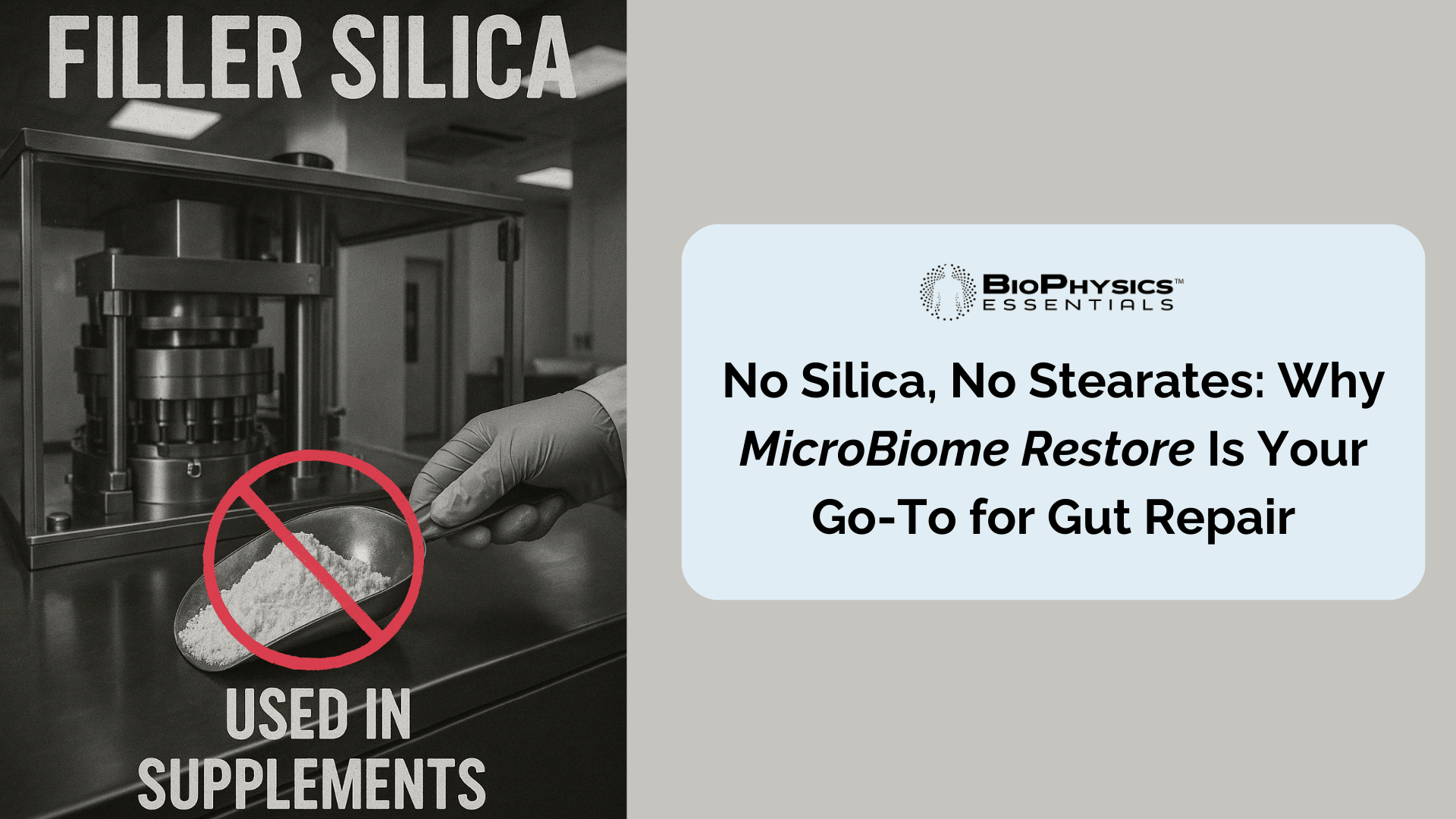

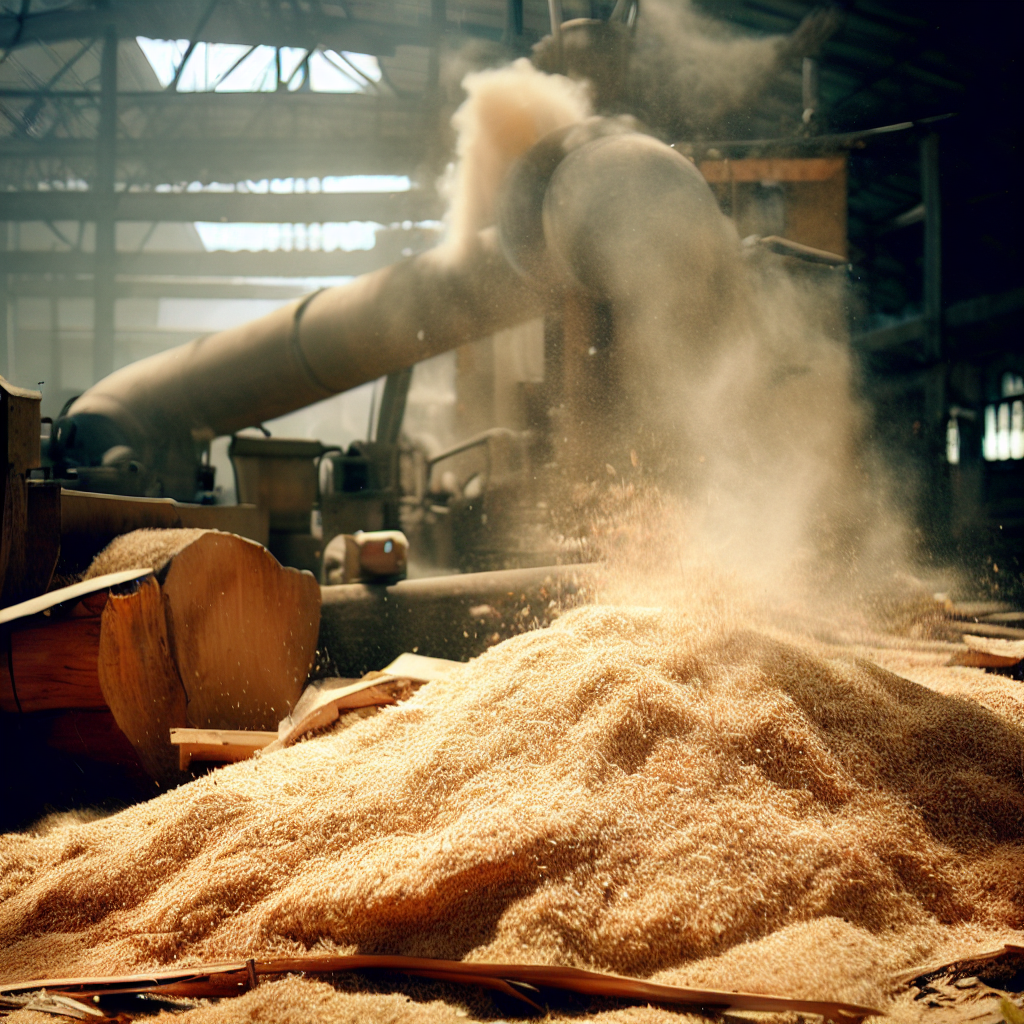
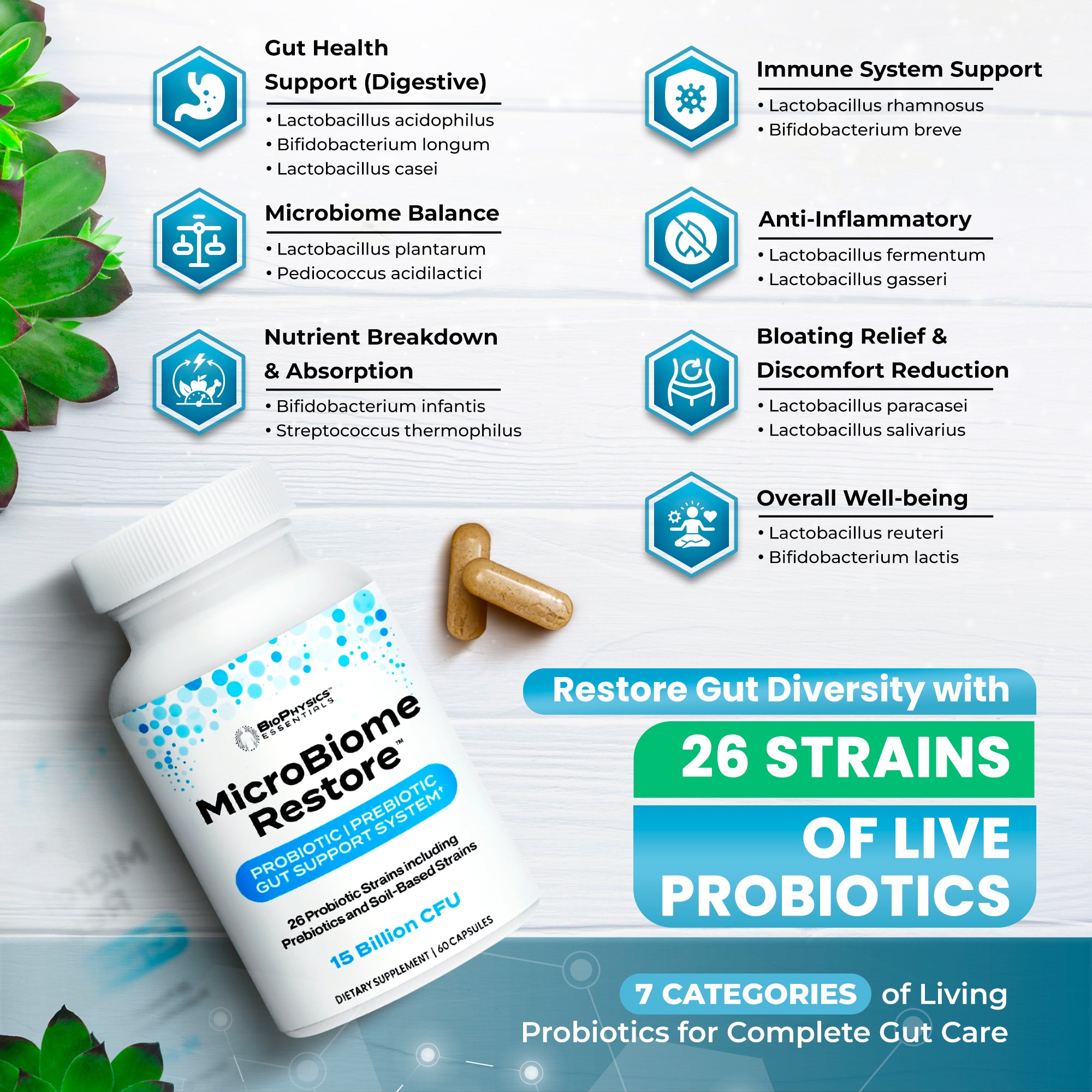


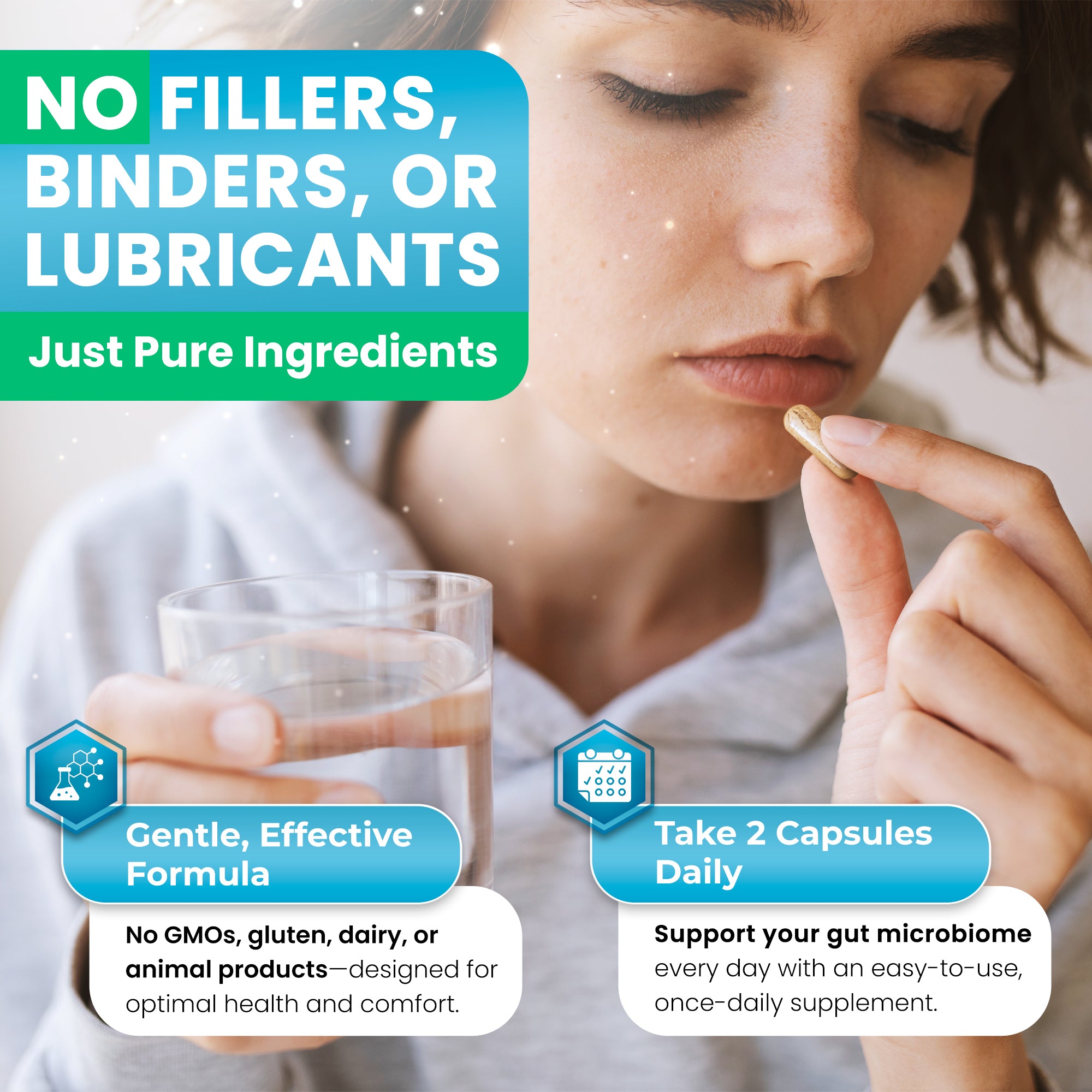
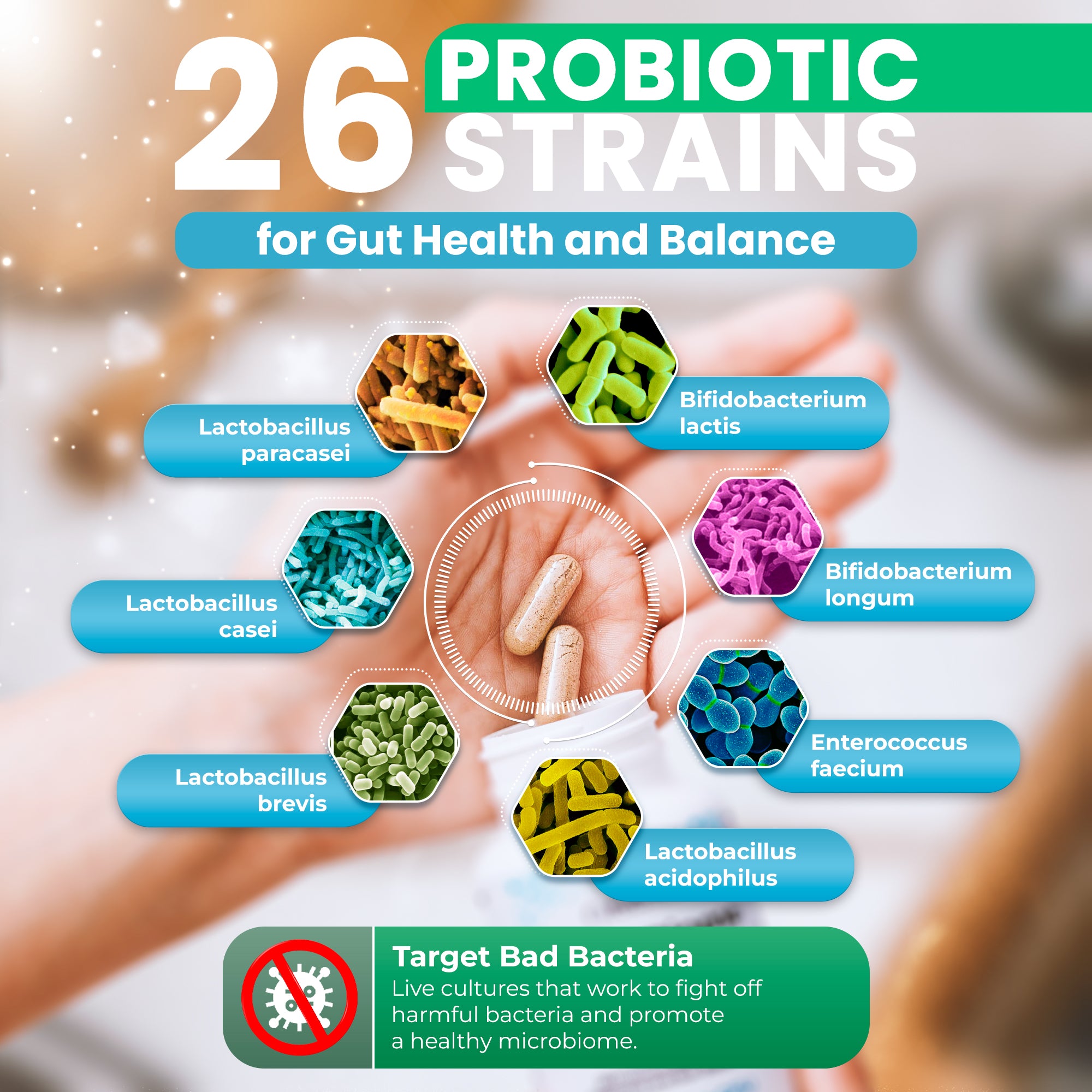

Share and get 15% off!
Simply share this product on one of the following social networks and you will unlock 15% off!